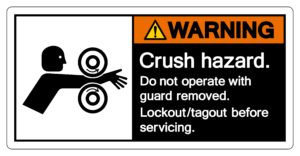Machine Guarding Resources
Leave a CommentSo, you find yourself with a machine hazard that you need to guard. Where do your turn for guidance regarding guards? Several resources are available for the person who is tasked with providing machine guarding.
The United States government provides resources in the Code of Federal Regulations (CFR). These can be found at www.ecfr.gov. Title 29 of the CFR, section 1910 covers “General Industry” regulations. 1910 Subpart O, covers Machinery and Machine Guarding. Definitions are covered in 1910.211 and it is wise to understand how terms are defined. For instance, in 1910.211(a)(1), Point of operations is defined by the regulation as “that point at which cutting, shaping, boring, or forming is accomplished on the stock.” (more…)



